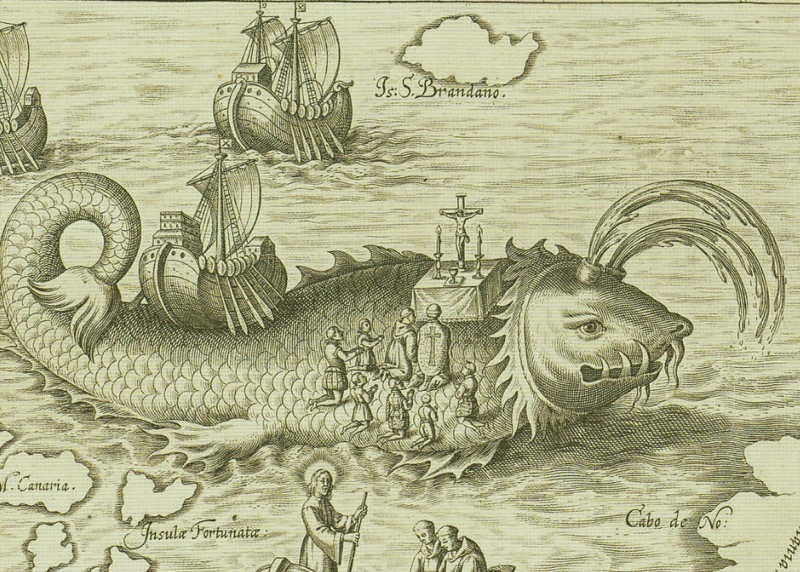via Big Think by Paul Ratner

While there are a number of theories of how life on Earth began (perhaps in hydrothermal vents at the bottom of oceans), one hypothesis is that eventually the early life forms transformed into something between fish and lizards, developing an ability to walk on land. Filling in some crucial details in this idea, researchers from the University of Chicago now showed that human hands have an evolutionary connection to fish fins.
Continue reading
===================================
via OUP Blog by Louise Gallagher

You might associate the recorder with memories of a second grade classroom and sounds vaguely resembling the tune of “Three Blind Mice” or “Mary Had a Little Lamb.” While the recorder has become a popular instrument in music education, it also has an extensive and interesting history.
Continue reading
===================================
via Boing Boing by David McRaney

Hypothetical situations involving dragons, robots, spaceships, and vampires have all been used to prove and disprove arguments.
Statements about things that do not exist can still be true, and can be useful thinking tools for exploring philosophical, logical, sociological, and scientific concepts.
The problem is that sometimes those same arguments accidentally require those fictional concepts to be real in order to support their conclusions, and that’s when you commit the existential fallacy.
Continue reading
===================================
via 3 Quarks Daily: Robert Zaretsky at The American Scholar

Death of Marat by Jacques-Louis David (Wikimedia Commons)
Terrorism is as old as recorded history. Plutarch describes how ancient Spartans would ambush and kill a few enslaved helots every year to keep the rest in a state of terror. A few centuries later, according to Josephus, the Jewish Zealots earned the moniker sicarii, or dagger men, thanks to their practice of slitting the throats of Roman officials in crowded marketplaces. The dagger was also the weapon of choice for the Assassins, a medieval Shiite sect dedicated to the destruction of both the Sunnis and the Crusaders. For more than a millennium, a Hindu offshoot known as the Thuggees strangled unsuspected travelers as offerings to the goddess Kali.
Continue reading
===================================
via the Guardian

From London when it had only one bridge, to a pictorial rendition of Sir Francis Drake’s invasion of Santo Domingo, these global city maps date back to the 1500s and are taken from Great City Maps, published by DK
See for yourself
===================================
via Boing Boing by Mark Frauenfelder

Here’s a gallery of flowers, mainly orchids, that look like monkeys, Darth Vader, naked men, human lips, dancing girls, laughing bumble bees, swaddled babies, parrots, human skulls, flying ducks, tiger heads, happy aliens, angels, doves, ballerinas, egrets, and moths.
Continue reading
===================================
via OUP Blog by Ben Hutchinson
At the home of the world’s most authoritative dictionary, perhaps it is not inappropriate to play a word association game. If I say the word “modern,” what comes into your mind? The chances are, it will be some variation of “new,” “recent,” or “contemporary.” This understanding of modernity is so ingrained that we rarely pause to reflect on its historical implications. Yet there is another way of conceiving the term, one that brings with it a whole different set of associations. What if we were to turn the telescope around, like Copernicus, and view modernity not as a new beginning, but as an end, as a period that is defined by the fact that it comes after everything else? What, in short, if we were to understand modernity as the old age of the world?
Continue reading
===================================
via Boing Boing by Cory Doctorow
Paris's Musée national du Moyen Âge teamed up with The University of Geneva to make this video demonstrating the fighting techniques available to people in 15th century armor, which are much more fluid and athletic that I had presumed – turns out you can really move in those tin cans.
Watch the video here
===================================
via The Guardian by Press Association

Photograph: FLPA/Rex Shutterstock
A study has found that bumblebees have distinct personalities.
Some bees play it safe by returning to the same flowers again and again while others search for new sources of nectar, scientists found.
The researchers, from Queen Mary University of London, tracked four bumblebees from birth to death, recording a total of 244 flights covering a distance of more than 110 miles.
Continue reading
===================================
Science isn’t self-correcting, it’s self-destructing. To save the enterprise, scientists must come out of the lab and into the real world.
via Arts & Letters Daily: Daniel Sarewitz in The New Atlantis
Science, pride of modernity, our one source of objective knowledge, is in deep trouble. Stoked by fifty years of growing public investments, scientists are more productive than ever, pouring out millions of articles in thousands of journals covering an ever-expanding array of fields and phenomena. But much of this supposed knowledge is turning out to be contestable, unreliable, unusable, or flat-out wrong. From metastatic cancer to climate change to growth economics to dietary standards, science that is supposed to yield clarity and solutions is in many instances leading instead to contradiction, controversy, and confusion. Along the way it is also undermining the four-hundred-year-old idea that wise human action can be built on a foundation of independently verifiable truths. Science is trapped in a self-destructive vortex; to escape, it will have to abdicate its protected political status and embrace both its limits and its accountability to the rest of society.
Continue reading
No comments:
Post a Comment